Fastlec uses cookies to ensure that we give you the best experience on our website. If you continue we assume that you consent to receive all cookies on the Fastlec website. Read More.
Blog
All of the latest news and insights into the electrical world, from Fastlec.
Well, it depends of course what you mean by ''type'. We'll split this into three main parts - Impeller type (mainly affects the performance), Operation type (to suit a particular application or setting) and Siting type (wall, ceiling, loft etc..)
Extractor fans are an essential component of ventilation systems in homes and buildings. They help remove stale and polluted air, odours, and excess moisture from indoor spaces, creating a healthy and comfortable environment. However, not all extractor fans are created equal. There are various types of extractor fans, each with its unique features, advantages, and limitations. In this article, we'll explore the different types of extractor fans, including axial, centrifugal, mixed-flow, intermittent, DMEV, CMEV, and heat recovery.
Let's start with the basic types of extractor impellors which affect the distance that the air can be moved and also the volume of air that can be moved.
The three impeller types are:
- Axial
- Centrifugal
- Mixed Flow
Axial Extractor Fans
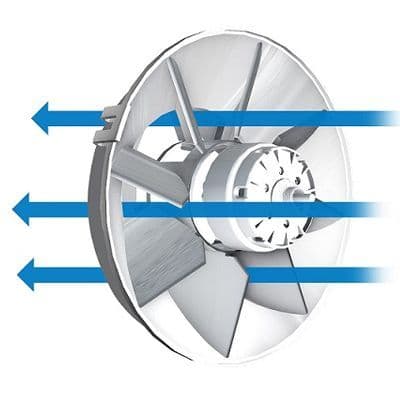
Axial extractor fans are the most common type of extractor fan found in homes and commercial buildings. They move air along the axis of rotation of the fan blade, meaning that the outlet and the inlet are in a straight line.
These fans are ideal for moving large volumes of air over short distances. They use a propeller-like blade to draw air through the fan and expel it out of the building. These fans are relatively simple and cost-effective, making them a popular choice for many ventilation applications. However, they tend to be noisy and less efficient than other types of extractor fans.
Centrifugal Extractor Fans
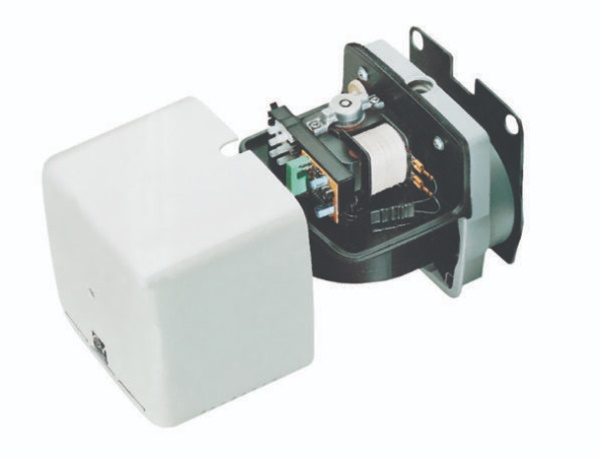
Centrifugal fans develop more pressure and thus can move the air over long distances. This higher pressure is achieved by keeping the axis of rotation of the fan blades radial to the airflow direction. Centrifugal extractor fans use a more complicated design than axial fans. They have a curved blade that rotates around a central hub, creating a centrifugal force that pulls air through the fan and expels it out of the building.
These fans are ideal for moving air over longer ducting runs. However, they are more expensive than axial fans and require more maintenance.
Mixed Flow Extractor Fans
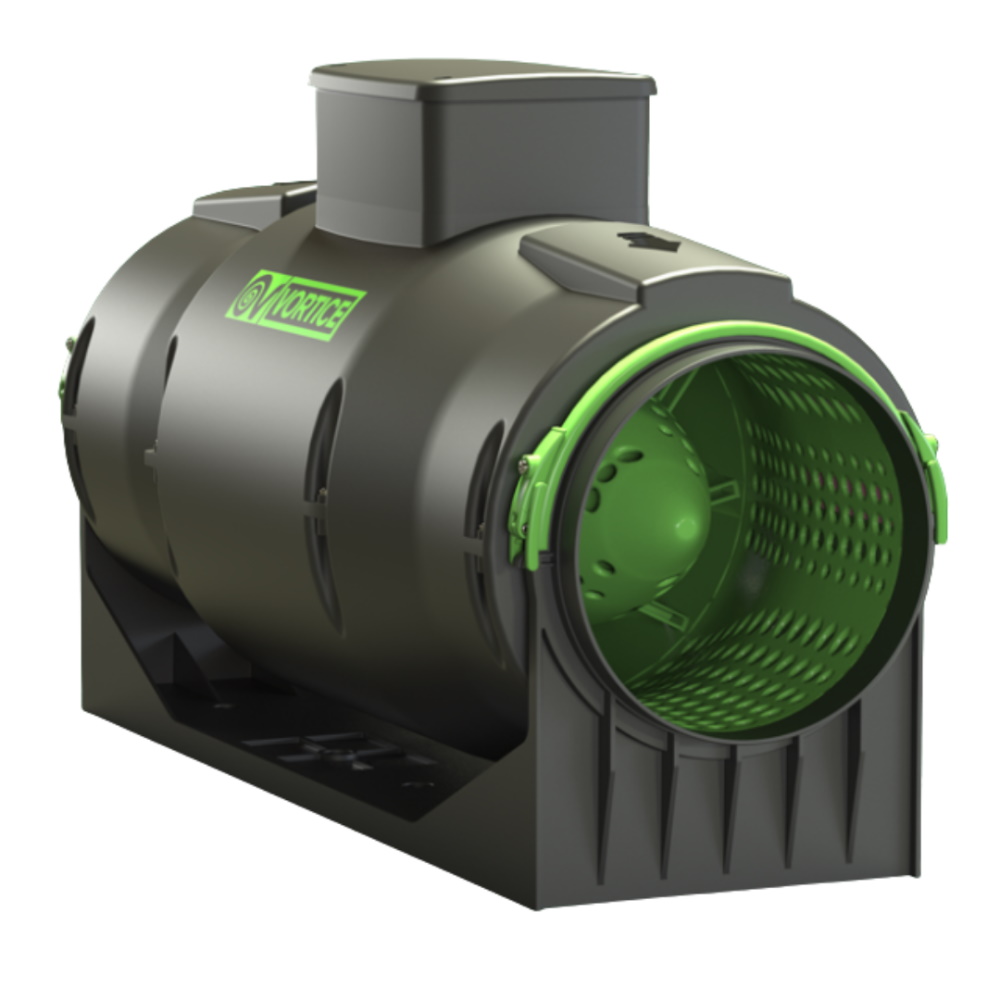
Mixed flow fans combine the benefits of axial and centrifugal fans by using a special type of hybrid impeller blades with both radial and axial elements. The result is a large volume of air moved over a long distance. They use a combination of axial and centrifugal forces to draw air through the fan and expel it out of the building. These fans are more efficient than axial fans but less expensive than centrifugal fans. They also tend to be quieter than axial fans but not as quiet as centrifugal fans.
In That Case, Are Centrifugal Fans Redundant vs Mixed Flow Fans?
Not really.
In general, a centrifugal fan can move air further than a same-size mixed-flow fan. This is because centrifugal fans can generate higher air pressures and are capable of producing more concentrated airflow.
However, the efficiency of the fan system also depends on the specific design of the fan, as well as other factors such as ductwork design, resistance to airflow, and the location of the fan. A well-designed mixed-flow fan can be more efficient and provide better performance than a poorly designed centrifugal fan, even if the centrifugal fan is technically capable of producing higher air pressures.
Ultimately, the best choice of fan type will depend on the specific requirements of the ventilation system, including the size and shape of the space, the level of air resistance, and the desired airflow rate.
Types of extractor fans with regards to 'operation'
Intermittent Extractor Fans
Intermittent fans, also known as on-demand fans, are designed to operate only when required. They are typically installed in bathrooms and kitchens and are activated by a switch or sensor when someone enters the room. Intermittent fans are an excellent choice for energy-efficient ventilation, as they only operate when necessary, reducing energy consumption and noise levels.
Intermittent fans are available in a range of sizes and are suitable for both residential and commercial applications. They are typically less expensive than other types of extractor fans but may require more frequent maintenance.
Most of the domestic fans currently in use in the UK are intermittent.
DMEV Extractor Fans
DMEV (Decentralised Mechanical Extract Ventilation) fans are designed to provide continuous, low-level ventilation throughout a building. They are typically installed in each room, providing individual ventilation control. DMEV fans are an excellent choice for energy-efficient ventilation, as they provide a continuous flow of fresh air without the need for high-powered fans.
DMEV fans are typically more expensive than other types of extractor fans but are more efficient and provide better air quality. They are suitable for both residential and commercial applications.
DMEV (Decentralized Mechanical Extract Ventilation) fans are recommended instead of intermittent fans in the UK because they provide continuous low-level ventilation, while still being energy-efficient. DMEV fans operate continuously, providing a consistent flow of fresh air throughout a building, while intermittent fans only operate when required, based on occupancy.
DMEV fans will usually come with a boost mode, which increases the performance of the fan temporarily when certain conditions are met such as humidity level, movement sensor, remote switching and air quality levels.
In the UK, Building Regulations require that all new dwellings have a ventilation system that provides a continuous flow of fresh air. This is to ensure that indoor air quality is maintained and to prevent the build-up of pollutants and moisture, which can lead to problems such as condensation and mould growth. DMEV fans are designed to meet these requirements, providing a continuous flow of fresh air without the need for high-powered fans, which can be noisy and consume more energy.
Intermittent fans, on the other hand, are designed to operate only when required, typically in response to occupancy or humidity levels. While they are energy-efficient, they may not provide adequate ventilation if occupants do not use the space regularly or if there is a high level of occupancy.
Overall, DMEV fans are recommended in the UK because they provide continuous low-level ventilation, which helps to maintain indoor air quality and prevent moisture-related problems, while still being energy-efficient.
CMEV Extractor Fans
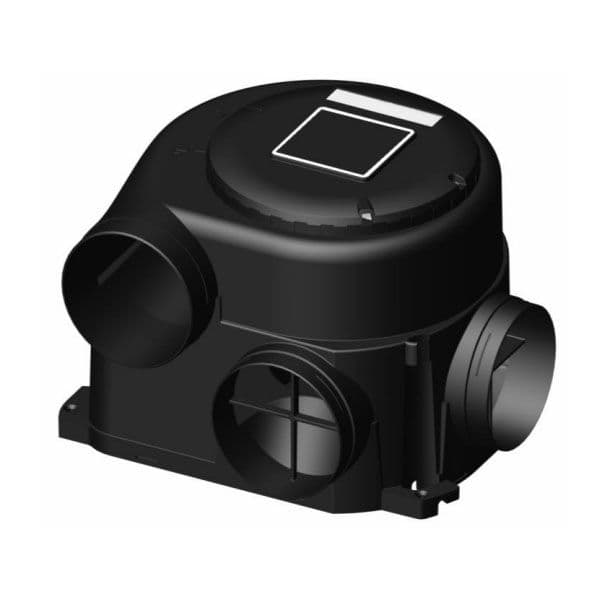
CMEV (Central Mechanical Extract Ventilation) fans are designed to provide continuous, low-level ventilation throughout a building. They are typically installed in a central location, providing ventilation for multiple rooms. CMEV fans are an excellent choice for energy-efficient ventilation, as they provide a continuous flow of fresh air without the need for high-powered fans.
CMEV fans are typically more expensive than intermittent fans, and DMEV fans. They are suitable for residential and commercial applications, particularly in buildings with multiple rooms or open-plan areas.
CMEV fans are available with a range of features, including variable speed controls and humidity sensors. They are more efficient than intermittent fans, as they provide continuous ventilation without the need for manual activation. However, they may require more maintenance than intermittent fans due to their continuous operation.
Heat Recovery Units
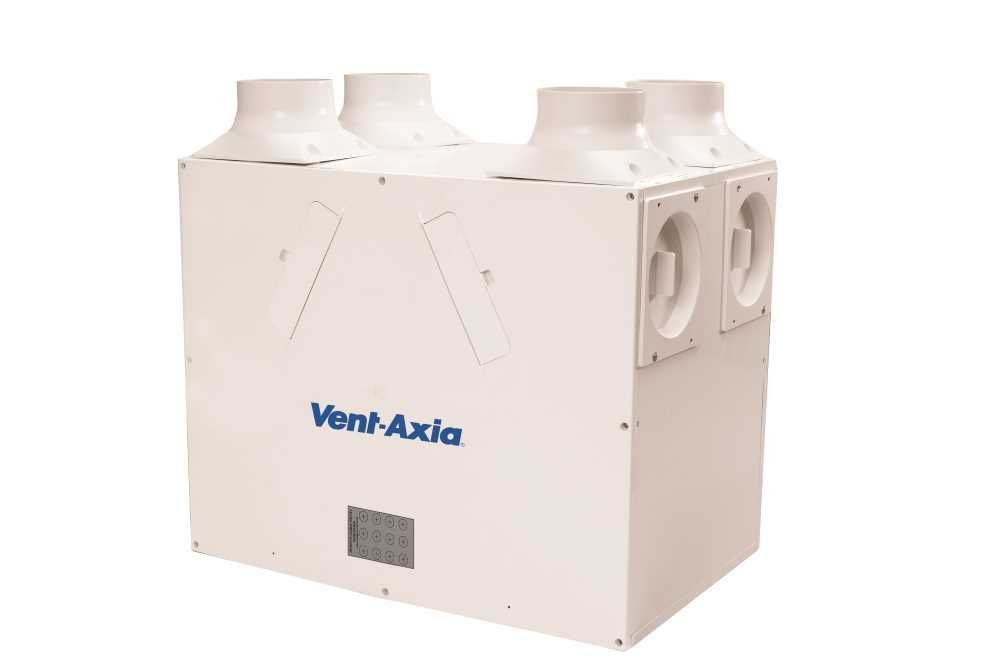
Heat recovery fans, also known as HRU (Heat Recovery Units) or MVHR Units ( Mechanical Ventilation with Heat Recovery ), work by extracting stale air from a building and using the heat energy to warm incoming fresh air. This process helps to reduce energy consumption and improve indoor air quality. Heat recovery units are typically installed in buildings with a high level of insulation, as they require a tight seal to operate effectively.
Heat recovery fans are more expensive than other types of extractor fans, but they offer significant energy savings and improved air quality. They are suitable for both residential and commercial applications and are particularly useful in buildings with a high level of insulation or where indoor air quality is a priority.
Centralised Heat Recovery Units
The most popular heat recovery units sit centrally in a dwelling (loft or cupboard) and remove stale warm air from heated rooms such as kitchens, utility rooms and bathrooms. They use the heat from this air to heat fresh air from outside and push the pre-warmed air into the living areas of the home.
Decentralised Heat Recovery Units
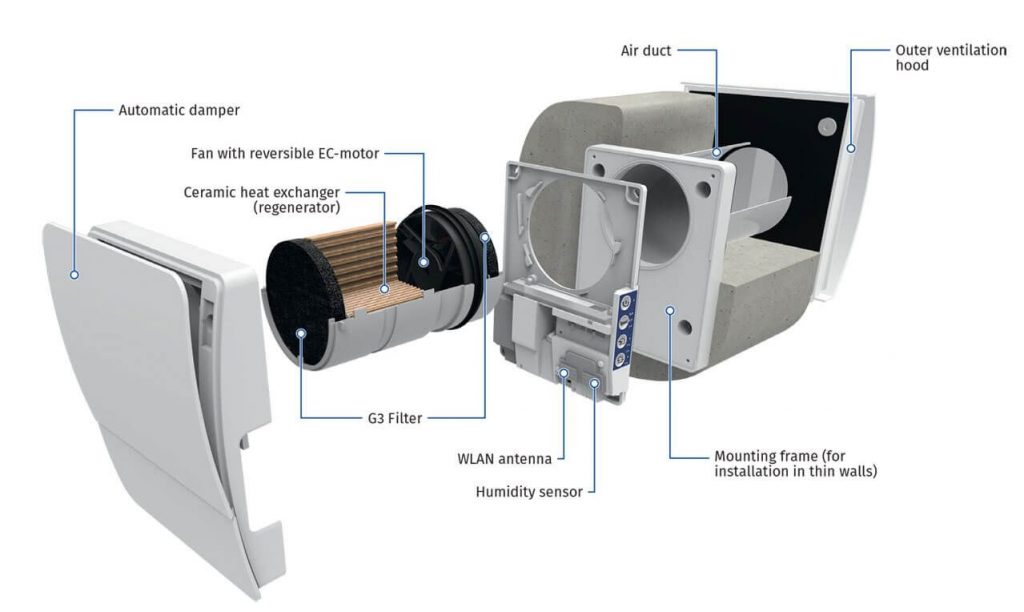
Increasingly popular, the decentralised (or single room) HRU can replace a standard wall fan in any room and uses its built-in heat exchanger to warm incoming air whilst exhausting stale air at the same time.
Siting options for extractor fans
Ceiling Extractor Fans
Ceiling extractor fans are a popular choice for those who prefer a sleek and unobtrusive look. They are particularly useful in open-plan kitchen designs, where a hood or wall-mounted extractor may not be practical. Ceiling extractor fans are mounted in the ceiling and vented to the outside through a duct. They can be operated by a remote control or a switch on the wall. The main benefit of a ceiling extractor fan is that it can be located anywhere in the room, as long as it is close to a power source.
Wall-Mounted Extractor Fans
Wall-mounted extractor fans are the most common type of extractor fan. They are designed to be mounted on an external wall, and the ductwork runs through the wall to the outside. Wall-mounted extractor fans are easy to install and offer a range of styles and sizes to suit different bathroom and kitchen designs. They are usually more affordable than other types of extractor fans.
Window Extractor Fans
Window extractor fans are an excellent option for those who don't have access to an external wall or need a smaller, more discreet option. These fans are designed to be mounted in a window frame and are connected to a duct that runs to the outside. Window extractor fans are relatively easy to install and provide good ventilation for smaller spaces.
Loft Extractor Fans
Loft extractor fans are typically used in buildings with attic spaces. They are installed in the loft and vented to the outside through the roof. Loft extractor fans are useful for larger spaces, as it allows a larger, more powerful fan to be used that could not be used within the room itself. They are more complex to install than other types of extractor fans, and they require access to the loft or roof space.
Chimney Extractor Fans
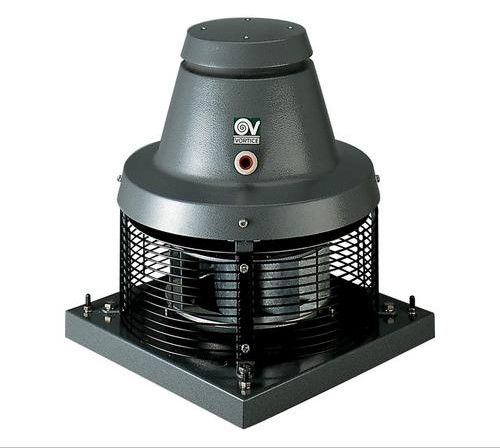
Chimney extractor fans are designed to be mounted on top of a chimney. Chimney extractor fans vent the smoke and fumes from a fireplace. They are typically more expensive than other types of extractor fans, and they definitely require professional installation.
Cooker Hood Extractor Fans
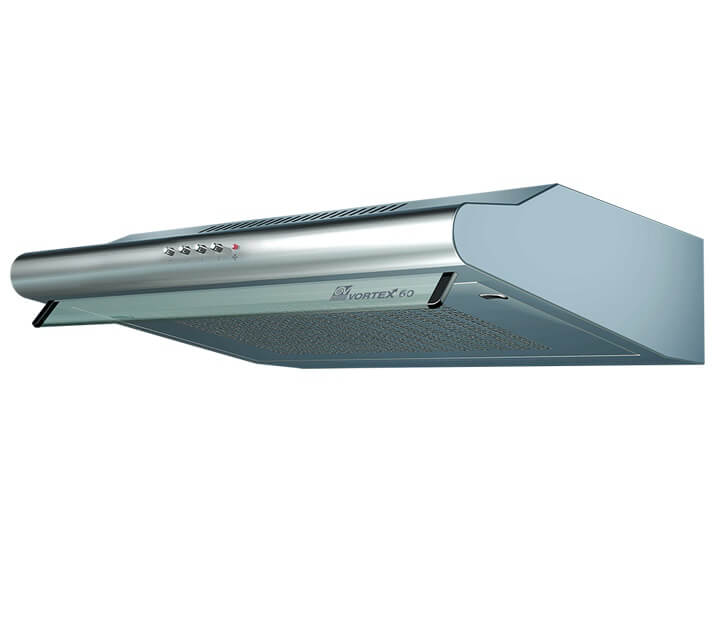
Cooker hood extractor fans are an all-in-one solution that combines a fan with a hood or canopy. They are designed to be mounted above the stove or cooktop, and they offer excellent ventilation and lighting for cooking. Cooker hood extractor fans come in a range of sizes and styles, and they are easy to install. They are also an excellent choice for those who want to save space in their kitchen.
It is also possible to buy a heat recovery unit with a cooker hood built-in or as an additional attachment. These units re-use the heat from cooking to pre-heat the incoming fresh air which can then be redistributed around the home.
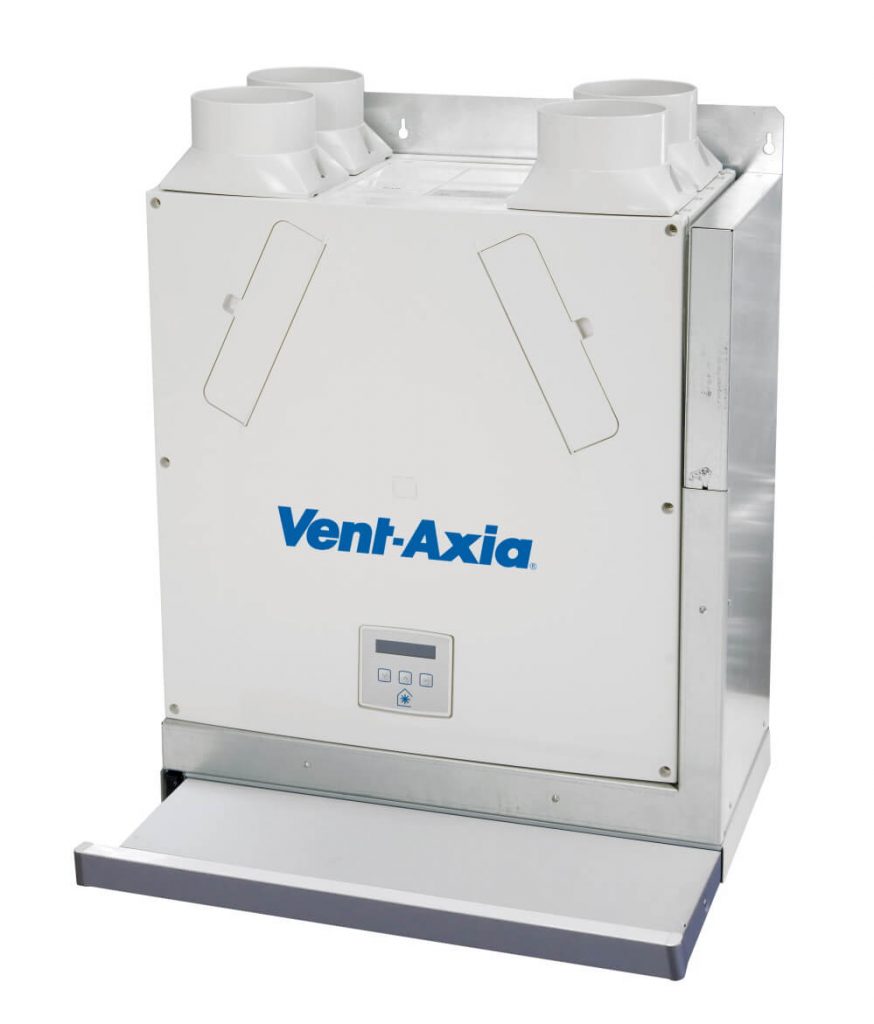
There are several siting options for extractor fans, including ceiling, wall, window, loft, chimney, and cooker hood. The choice of location will depend on the size of the room, the style of the kitchen or bathroom, and the homeowner's personal preferences. It's important to choose the right type of extractor fan to ensure that the space is adequately ventilated and that the appliance complements the overall design of the room.
Overall conclusion on types of extractor fan
In conclusion, extractor fans come in a variety of types, each with its own unique features and benefits. Axial, centrifugal, mixed-flow, intermittent, DMEV, CMEV, and heat recovery fans all offer different levels of efficiency, noise levels, and maintenance requirements. It is important to consider the specific requirements of your building and choose an extractor fan that meets those needs. Proper ventilation is essential for the health and well-being of building occupants, and choosing the right extractor fan can help ensure a healthy and comfortable indoor environment.


